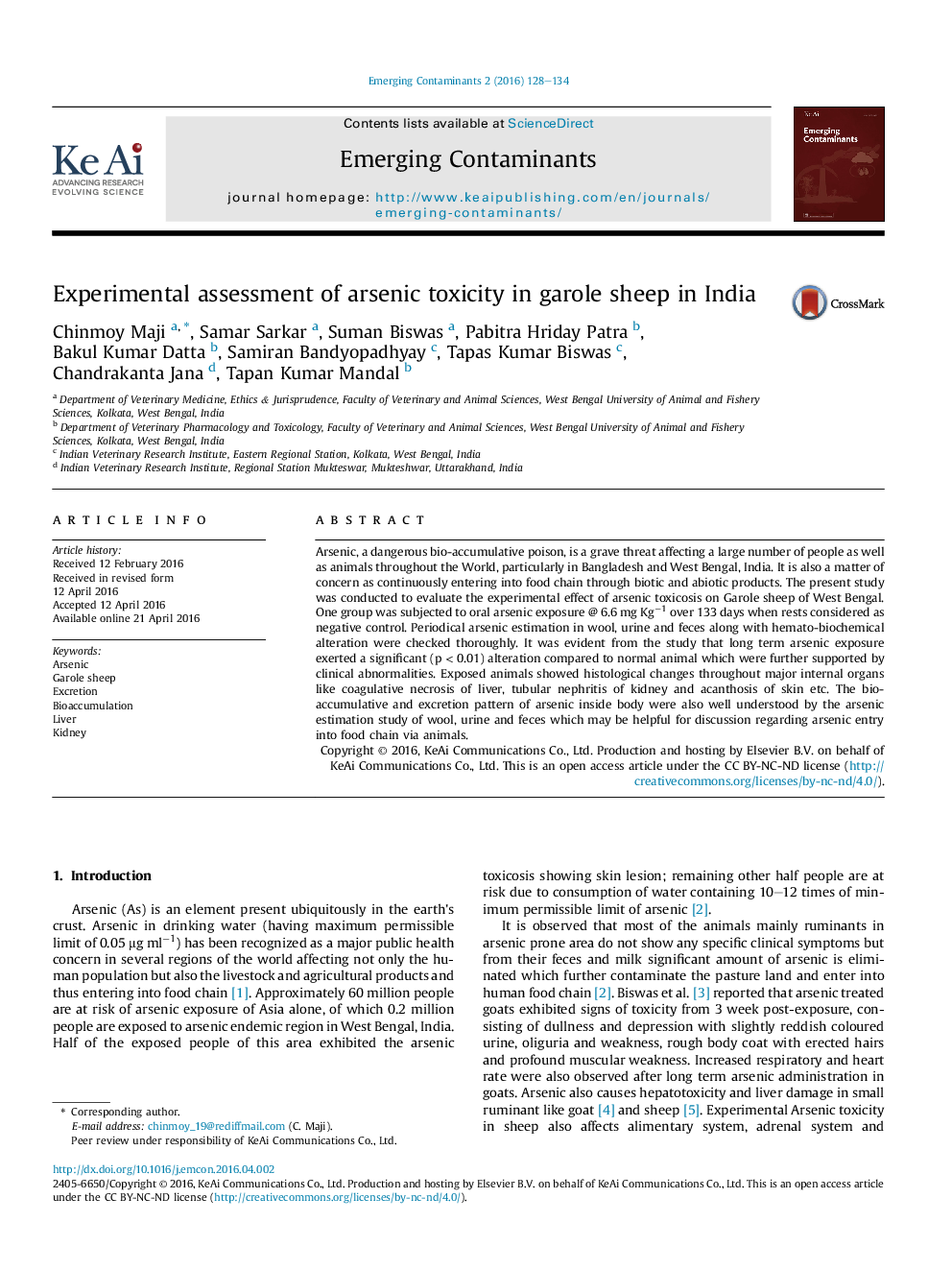| Article ID | Journal | Published Year | Pages | File Type |
|---|---|---|---|---|
| 4422627 | Emerging Contaminants | 2016 | 7 Pages |
Arsenic, a dangerous bio-accumulative poison, is a grave threat affecting a large number of people as well as animals throughout the World, particularly in Bangladesh and West Bengal, India. It is also a matter of concern as continuously entering into food chain through biotic and abiotic products. The present study was conducted to evaluate the experimental effect of arsenic toxicosis on Garole sheep of West Bengal. One group was subjected to oral arsenic exposure @ 6.6 mg Kg−1 over 133 days when rests considered as negative control. Periodical arsenic estimation in wool, urine and feces along with hemato-biochemical alteration were checked thoroughly. It was evident from the study that long term arsenic exposure exerted a significant (p < 0.01) alteration compared to normal animal which were further supported by clinical abnormalities. Exposed animals showed histological changes throughout major internal organs like coagulative necrosis of liver, tubular nephritis of kidney and acanthosis of skin etc. The bio-accumulative and excretion pattern of arsenic inside body were also well understood by the arsenic estimation study of wool, urine and feces which may be helpful for discussion regarding arsenic entry into food chain via animals.
